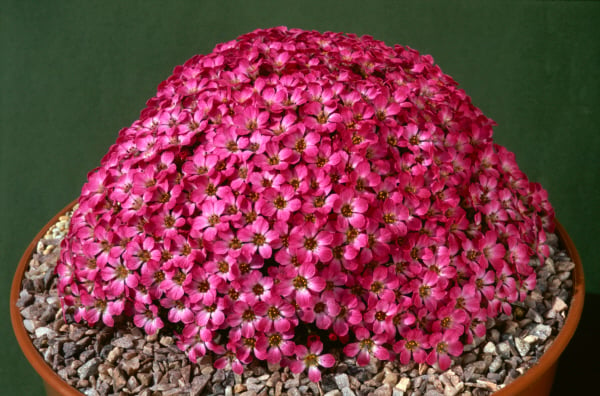Size
Ultimate height
Up to 10cmTime to ultimate height
2–5 yearsUltimate spread
0–0.1 metreGrowing conditions
Moisture
Moist but well–drainedpH
Alkaline, NeutralColour & scent
| Stem | Flower | Foliage | Fruit | |
| Spring | Pink Red | Green | ||
|---|---|---|---|---|
| Summer | Green | |||
| Autumn | Green | |||
| Winter | Green |
Position
- Full sun
- Partial shade
Aspect
West–facing or South–facing or North–facing or East–facing
Exposure
Exposed or Sheltered Hardiness
H5Botanical details
- Family
- Saxifragaceae
- Native to GB / Ireland
- No
- Foliage
- Evergreen
- Habit
- Matforming
- Genus
Saxifraga can be annuals, biennials, evergreen or herbaceous perennials, mostly mat-forming in habit, with simple or palmately lobed leaves and starry or rounded flowers which may be solitary of in panicles or cymes
- Name status
Accepted
- Horticultural Group
- Porphyrion section saxifrages are compact, cushion or mat-forming evergreen perennials with small, usually lime-encrusted leaves, and 5-petalled white, yellow or pink flowers in early summer
How to grow
Cultivation
Suitable for rock garden, trough or alpine house in full sun or partial shade. Select a gritty compost, but keep roots moist
Propagation
Propagate by detaching individual rosettes and root as cuttings
Suggested planting locations and garden types
- Gravel garden
- Patio and container plants
- Rock garden
Pruning
No pruning required
Pests
May be susceptible to aphids, slugs, vine weevil and glasshouse red spider mite
Diseases
Generally disease-free
Love gardening
Sign up to receive regular gardening tips, inspiration, offers and more
View our Privacy Policy
Get involved
The Royal Horticultural Society is the UK’s leading gardening charity. We aim to enrich everyone’s life through plants, and make the UK a greener and more beautiful place.
